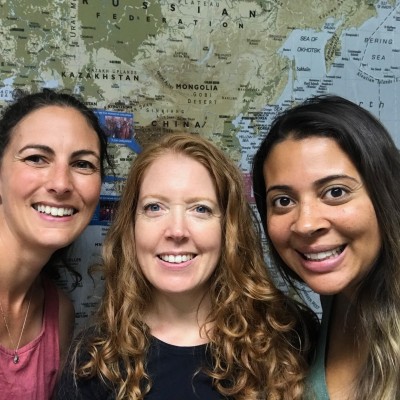Despite the uncertainty, our preschool centres offer a safe space for young children, ensuring vital Early Childhood Development (ECD).
Most of Myanmar is engulfed in conflict, with various military groups resisting the junta. Hundreds of thousands are displaced, many from ethnic minority areas like Kachin State, where Children on the Edge has worked for a decade, providing early years education and care through 14 preschool centres for children aged 3-6.
The displaced communities we support live in active war zones, enduring military shelling and human rights violations. Air raid bunkers near homes and preschools are a frightening reminder of the reality of war.
Remote mountain camps house over 13,000 displaced people, where inflation and lack of basic supplies like food and fuel have left families struggling. No other organisations offer humanitarian relief here, and the crisis is largely overlooked by international media.
We’ve responded by providing extra funds for meals and snacks, increasing teachers' stipends, and distributing rain and winter clothing to the children.
"I love the warm clothes and boots you have given me. I am happy to go to school because there are more playing materials than at my home. I like to have snacks after nap time."
Kawn Ja Htoi Tsin, aged 5
Amidst the conflict and humanitarian crisis, Children on the Edge continues to support Early Childhood Development (ECD) in Kachin State, providing a safe space for displaced children in eight remote settlements.
Partnering with two local organisations; Kachin Development Group (KDG) and Kachin Women’s Association (KWA), over the past decade, our 15 preschool centres have been welcoming places, where nearly 500 young children can find safety and care.
Despite recent challenges, these preschools have been maintained as bright, colourful spaces that inspire learning and fun for the children, and much needed hope for their parents.
Teachers, trained within the camps, deliver high-quality Early Childhood Education (ECE). Recently, they’ve received new learning materials and attended training to develop their skills further.
Parents are deeply involved, maintaining preschool buildings, making play materials, and learning about parenting and child protection through workshops. They’ve seen their children thrive, excitedly describing what they have done, which friends they have played with, which songs they have sung and what kind of lessons they have learnt.
Lahtaw Lu Lu Pan is 5 years old and a student from one of our preschool centres. She moved to the area after fighting in her home village. Her father is a soldier in the KIA (Kachin
Independence Army) and her mother is a shopkeeper in the camp. She says:
“My Mum is not a rich woman, although she is a shopkeeper. So we live in just a temporary shelter, not a concrete house. I am very happy in school because there are toys and playing materials and the teachers don’t get angry. I have three lovely friends in my school and I usually play with them. I like the umbrella and croc shoes you gave me very much, thank you”.
Though the outcome of Myanmar’s crisis is uncertain, Children on the Edge remains committed to supporting the Kachin communities. With continued support, we aim to provide safe spaces for children as long as needed, giving them the best possible start in life. We are ready to expand our programme to other camps lacking early childhood education for young children.
By age five, 90% of a child’s brain has developed, making early experiences vital. Children need nutritious food, interaction, and safe spaces to play for healthy brain growth, especially under a caregiver’s love.
For children in conflict zones, this is even more urgent due to stress, limited learning, and reduced health services. That’s why we create protective environments and provide high-quality Early Childhood Development support. This goes beyond education, helping children build resilience and recover from trauma. A nurturing, safe space shields them from the harmful effects of toxic stress, crucial for healthy brain development.



